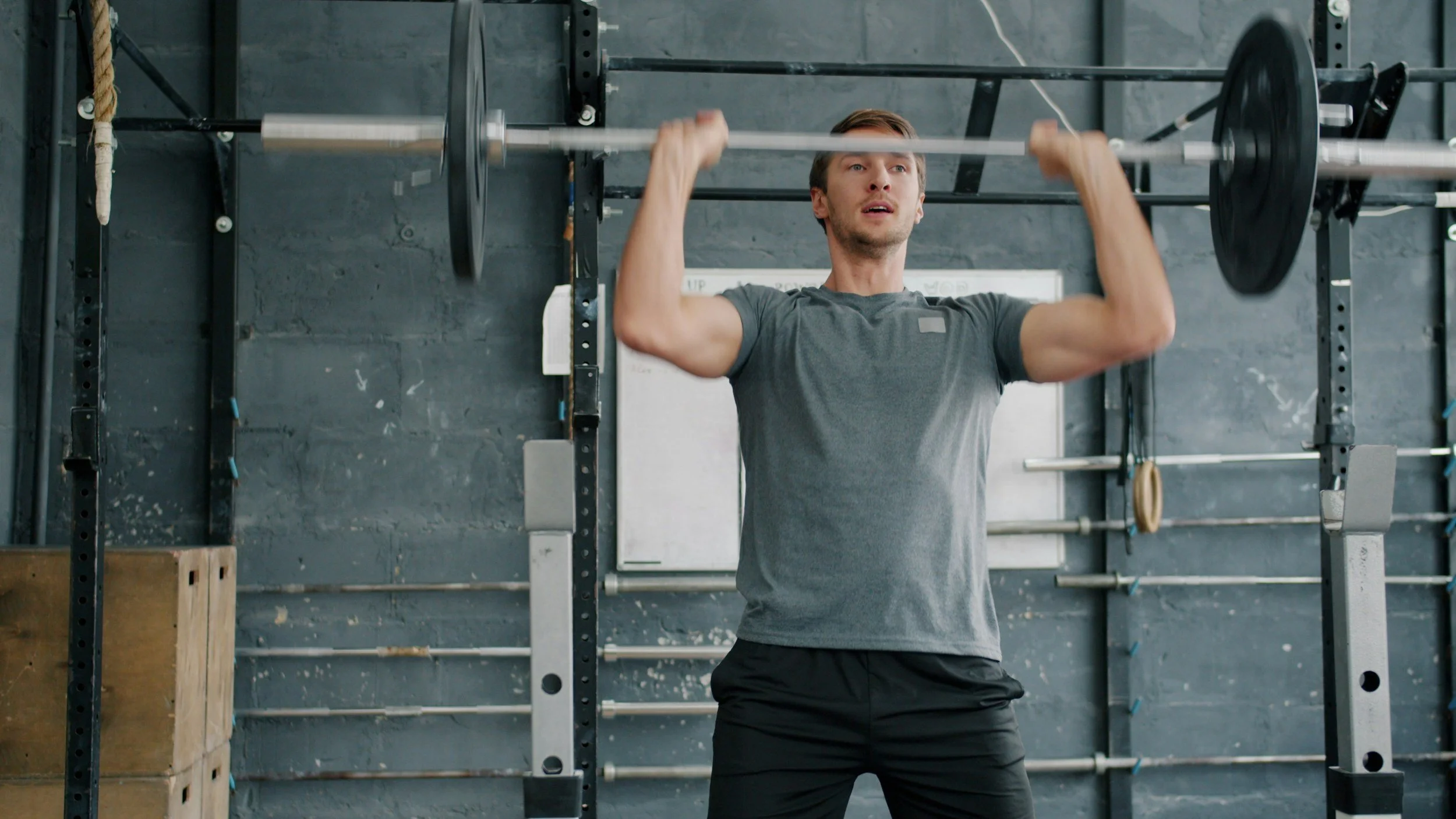4 Ways to Improve Power Output | Snatch and Clean & Jerk
The snatch and clean & jerk aren’t just about brute strength—they’re about precision, timing, and fast force. If your lifts feel stuck or the power isn’t carrying over to sport, it’s time to train power on purpose.
At Athletic Edge Physical Therapy (AEPT) in Sorrento Valley, we work with CrossFitters, Olympic lifters, and functional athletes every week. Small, targeted changes often create big jumps in performance. Below are four strategies, plus ready-to-use drills and templates.
1. Prioritize Explosive Hip Extension
Both lifts live or die on hip speed. Common faults—early arm pull, yanking with the back—steal bar speed through the middle.
What to include:
• Trap bar jumps — 4×4 @ ~20–30% 1RM
• High pulls from mid-thigh — 5×3, RPE 7–8, crisp bar speed
• Hardstyle kettlebell swings — 6×10, focus on hip snap
• Snappy hang power variations — emphasize speed through the middle, not grinding heavier
Why it matters:
Faster, more forceful hip extension increases vertical impulse, buys you time under the bar, and makes turnover easier.
2. Improve Front Rack and Overhead Mobility
Poor thoracic/shoulder mobility produces inefficient bar paths and unstable receiving positions. That caps power expression.
Quick self-checks:
• Can you hold a front rack without elbows dropping or wrists collapsing?
• Can you lock out overhead without overextending your low back?
Fix it with:
• Wall-facing overhead squats (PVC to light bar)
• Lat and T-spine mobility (foam roll + breathing drills)
• Scapular stability: serratus punches, Y-T-W raises, lower-trap holds
3. Train Eccentric and Isometric Phases
Most lifters only train the concentric (up) portion. Eccentric and isometric work build control, tendon stiffness, and elastic power.
How to program:
Slow eccentrics on pulls/squats (3–5 sec down)
Paused front squats (2–3 sec at bottom) or overhead holds (10–20 sec)
Tempo lifts: 3-1-X (slow down, brief pause, explode up)
Why this works:
Better force absorption and energy storage = bigger rebound and a more decisive second pull.
4. Address Asymmetries and Instability
Even the strongest lifters can have small imbalances that throw off timing and bar path—especially when fatigued or under load.
What we assess at AEPT:
Single-leg strength and pelvic control
Core timing under load
Ankle dorsiflexion and big-toe extension (affects depth, balance, and receiving positions)
Try this:
Front-foot-elevated split squats — 3–4×8–10/side
Pallof presses / anti-rotation holds — 3–4×20–30 sec
Balance work with eyes closed; light unstable surfaces for proprioception
Bonus Tip: Know When to Back Off
Power isn’t just pushing harder; it’s managing your nervous system. Flat bar speed, achy joints, or repeated misses are signals—reduce volume, protect sleep, and keep speed work fast.
Key Exercises to Drive Power
Depth Jump → Box Jump Contrast
Do 5 sets × 5 reps early in the session. Step off, stick the landing, rebound to a box. Rest fully between sets.
Isometric Mid-Thigh Pull (IMTP)
The second-pull zone (knee to hip) shows the greatest ground reaction force, power output, and barbell velocity. Building maximal force capacity here correlates with heavier snatch and clean & jerk loads.
For injured tissue (tendon loading):
5×45-sec isometric holds. This duration helps quiet dominant tissue so weaker/injured tissue is forced to work, building resilience.
For maximal force capacity (healthy lifters):
5×10–15-sec maximal-intent holds. Brace hard and push through the floor.
Back Squat & Front Squat
Use squats to build strength across the full ROM, improving leg drive and receiving confidence.
• Strength: 2–5 reps
• Hypertrophy: 6–8 reps
• Muscular endurance: 12+ reps
Warm-up suggestion: hip/T-spine prep, ankle/big-toe mobility, then position work (front-rack holds → front squats → back squats).
Quick Programming Templates
Power Day (45–60 min)
Warm-up: 6–8 min light cyclical + mobility (lat/T-spine/ankle)
Plyo contrast: Depth Jump → Box Jump — 5×5
Barbell speed: Hang Power Clean or Snatch — 6×2 @ 60–70% (fast)
Accessory power: Trap Bar Jumps — 4×4 @ 20–30%
Core/anti-rotation: Pallof Press — 3×20–30 sec
Strength–Speed Day
IMTP — 5×10–15 sec (or 5×45 sec for rehab emphasis)
Front Squat (paused 2–3 sec) — 5×3
High Pulls (mid-thigh) — 5×3 @ RPE 7–8
Kettlebell Swings (hardstyle) — 6×10
How We Help at Athletic Edge PT (San Diego)
We blend manual therapy, movement assessment, and sport-specific strength to help you lift heavier—without sacrificing mobility or long-term health. Need objective data? Our VALD Force Plate testing tracks symmetry, rate of force development, and readiness so you return to training smarter.
Whether you’re prepping for a meet or trying to PR that lift you’ve been chasing for months, we help you move with more intention, more speed, and more confidence under the bar.
Want More Power in Your Lifts?
If you’re hitting plateaus or training through pain, don’t just push harder—train smarter.
Call or text us to book a performance assessment with one of our expert physical therapists.
📞 858-371-2575 or book online HERE
Related Resources
References:
Joffe, Shaun & Price, Phil & Chavda, Shyam & Shaw, Joseph & Tallent, Jamie. (2022). The Relationship of Lower-Body, Multijoint, Isometric and Dynamic Neuromuscular Assessment Variables With Snatch, and Clean and Jerk Performance in Competitive Weightlifters: A Meta-Analysis. Strength & Conditioning Journal. Publish Ahead of Print. 10.1519/SSC.0000000000000755.

